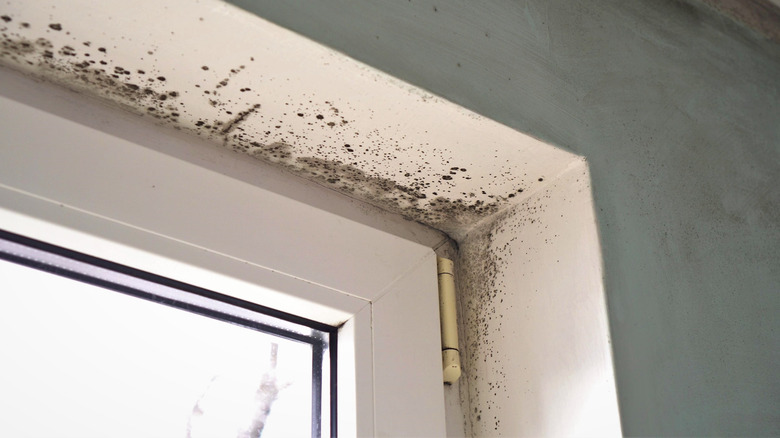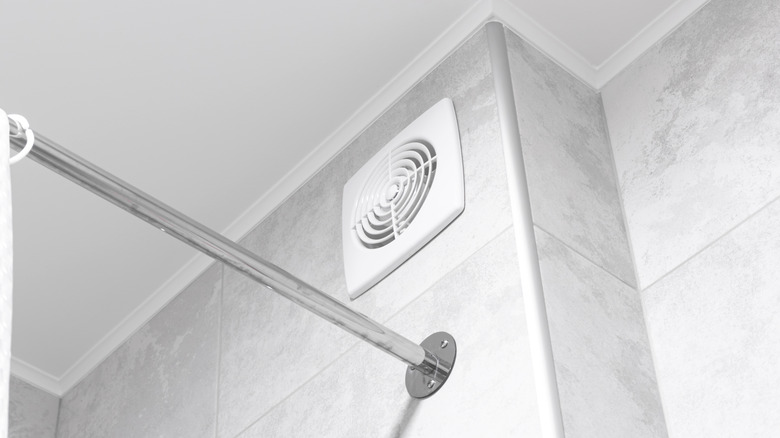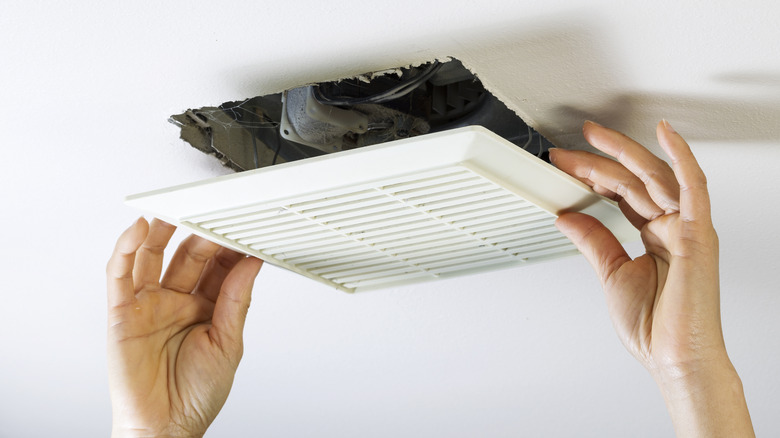The Best Way To Vent A Bathroom To Keep It Mold-Free
Bathrooms are one of the most susceptible areas in your home to moisture and water-related damages. As Mansfield Plumbing points out, bathrooms trap lots of moisture and heat when you take a shower or a bath, which can lead to various degrees of damage, but one of the more dangerous but highly likely outcomes is mold growth.
Mold growth in your bathroom is not a matter to be taken lightly. Exposure to the black mold that grows in overly humid bathrooms can result in respiratory symptoms like coughing, wheezing, congestion, and other symptoms like irritated eyes and skin rashes, per MedicineNet. These symptoms will be exacerbated in those with asthma, general allergies, mold allergies, or those who are immunocompromised. In the long run, black mold exposure can result in insomnia, memory loss, and trouble concentrating, as well as depression, anxiety, hair loss, light sensitivity, and weight gain (via ECOS).
Getting rid of mold once it has grown is very hard due to how it spreads, so you should do your best to prevent it from growing in the first place. One of the best ways to do this is to properly vent your bathroom.
What kind of vent to get
One of the most important features to install in your bathroom after a shower or bathtub is an exhaust fan or vent fan. Not only are these vital to prevent moisture and humidity from sitting stagnant in your bathroom, but they help with eliminating odors, as well as helping to remove chemicals in the air when cleaning, according to Central Heating and Air Conditioning.
If you're someone who has been resistant to installing an exhaust fan in your bathroom due to the noise, look for a fan with lower sones ratings, which means they'll be a little quieter. As for what type of fan to get, that's determined by the size of your bathroom. Home Ventilating Institute says that bathrooms need a roughly 1 cubic foot per minute (CFM) rating per square foot if the room is under 100 square feet. If your bathroom is larger than that, assume each appliance in your bathroom needs a 50 CFM rating.
How to install vent
Installing a bathroom exhaust fan or vent on your own is not an easy task, so consider consulting an electrician or other technician first. According to Home Depot, the cost to install a brand new vent, including ductwork and wiring, starts at around $500. Considering this project will require removing pieces of your roof and installing new electrical wires, the cost will likely be worth the trouble saved.
If you're confident in your installation skills and want to do it yourself, though, you'll need to first determine where in your bathroom to install it — ideally somewhere central — and cut out a chunk of the drywall, preferably from the attic using nails as your guide (via Home Depot). Next, use screws to attach the fan to your ceiling joists, taking care to avoid contact with any insulation.
From your attic, cut out a hole in the roof that will fit your roof vent and tailpipe using a saw blade. Use a roofing adhesive to initially keep the vent in place, using nails to keep it firmly secured. Reattach your roof shingles with roofing cement. Turn off your power and install the wiring as dictated by your vent's manufacturer's guide.


